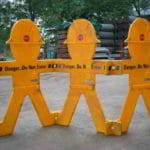New Coalition study looks at commercial EE financing in Northwest

Not surprisingly, finding ways to increase the flow of money to these worthy projects is much on the minds of people who see energy efficiency as the major component of the region’s energy mix in coming decades. That is, just about everybody with a serious thought about energy policy.
While there is no consensus on a precise mix of public policy and private sector solutions to the question of how to cover up-front costs, it’s worth taking a look at the financing landscape, what the barriers are in detail and what range of actions might open the funding spigot to help achieve the cost effective energy-savings potential that energy planners tells us is available.
Toward that end, the Efficiency Works! project commissioned a study of Northwest lending for energy efficiency projects in small and mid-sized commercial enterprises. The goal is to examine the current landscape, including the barriers encountered by existing programs, and offer a menu of solutions that might help get us to the goal in the Northwest Power and Conservation Council’s Sixth Power Plan: meeting 90 percent of new electricity demand over 20 years with better energy efficiency.
There are, of course, no magics wands. And no one path is going to deliver all the money needed to all the prospective borrowers. But a thorough understanding of what the world looks like will certainly help put the whole, complicated puzzle together. That’s what we’ve tried to provide.
The entire 48 page study can be found here.
A shorter executive summary is available here.

